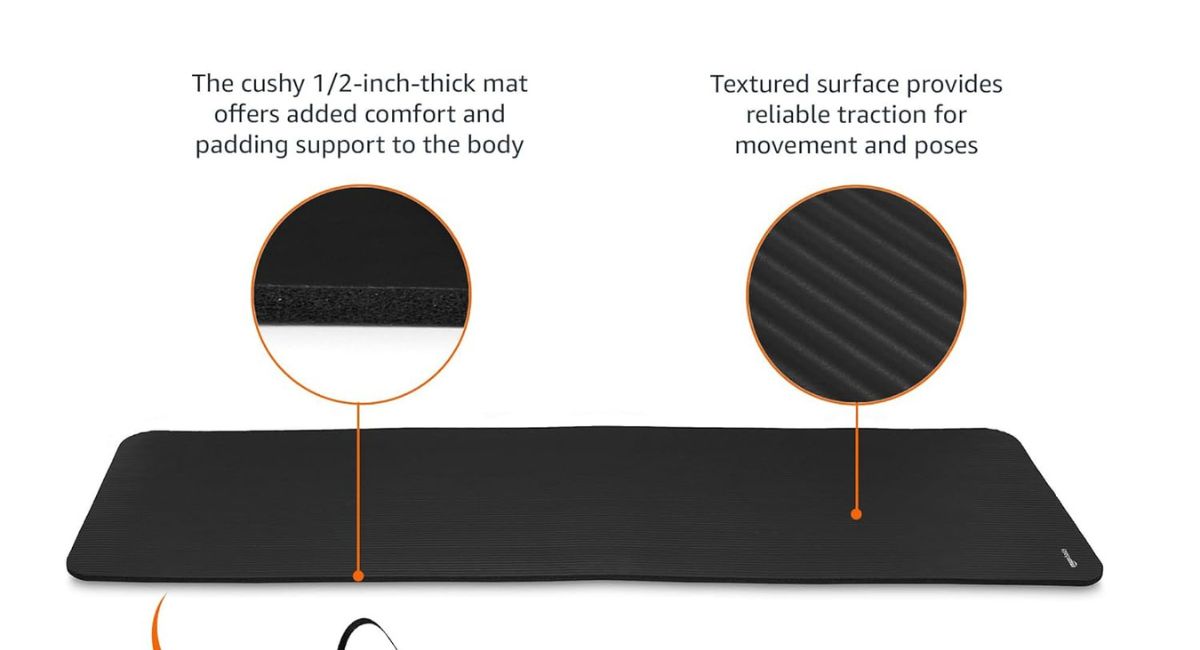Bicycle carriers are devices that allow you to transport your bike on a car or other vehicle. There are many different types of bicycle carriers available, each with its own advantages and disadvantages.
I have listed a few of them below; take a look at each and see which one is best for you. Many people transport their bikes in their cars and ride them on the hills. There are numerous health benefits besides sports.

5 Bicycle carriers you must know
1. Hitch-mounted bicycle carriers
Hitch-mounted bicycle carriers are the most common type of bicycle carrier. They attach to the hitch receiver on the back of your car. Hitch-mounted bicycle carriers are available in a variety of styles, including platform racks, hanging racks, and trunk racks.
Benefits:
- Ease of use: Hitch-mounted bike racks are easy to install and use. They simply attach to the receiver hitch on the back of your vehicle. Once installed, you can load and unload your bikes quickly and easily.
- Security: Hitch-mounted bike racks are more secure than other types of bike racks. They are less likely to be stolen, and they provide better protection for your bikes from the elements.
- Versatility: Hitch-mounted bike racks can carry multiple bikes, depending on the model. They can also be used to carry other items, such as kayaks and surfboards.
- Accessibility: Hitch-mounted bike racks are easier to access than roof-mounted racks. You don’t need to lift your bikes up onto the roof of your vehicle.
- Aerodynamics: Hitch-mounted bike racks have less of an impact on your vehicle’s aerodynamics than roof-mounted racks. This can help you save money on gas.
2. Roof-mounted bicycle carriers
Roof-mounted bicycle carriers attach to the roof of your car. They are a good option if you don’t have a hitch receiver on your car, or if you need to transport more than two bikes. Roof-mounted bicycle carriers are available in a variety of styles, including fork-mount racks, wheel-mount racks, and tray-mount racks.
Benefits:
- Space Optimization: Roof-mounted racks keep your bikes safely secured above your vehicle, leaving your trunk space and interior completely accessible for luggage, gear, or passengers. This is particularly beneficial for families or groups with multiple bicycles.
- Versatility: Roof-mounted racks accommodate a wide range of bicycle styles and sizes, including mountain bikes, road bikes, and even electric bikes. Many models offer adjustable straps or cradles to securely hold different frame designs and wheel sizes.
- Security: Roof-mounted racks typically come with locking mechanisms that prevent the unauthorized removal of your bicycles. This provides peace of mind while you’re parked or away from your vehicle.
- Aerodynamics: While some roof-mounted racks may slightly increase wind resistance, they generally have less impact on fuel economy compared to hitch-mounted racks. This is because they are positioned higher and create less drag.
- Compatibility: Roof-mounted racks are compatible with a wide range of vehicles, including cars, SUVs, and trucks, as long as they have pre-installed roof rails or crossbars.
- Unobstructed Visibility: Roof-mounted racks don’t obstruct your rearview or side mirrors, providing you with a clear view of the road and surroundings. This enhances safety and reduces blind spots.
- Reduced Sway and Movement: Roof-mounted racks typically provide a more stable and secure transportation method for bicycles, minimizing swaying and movement during travel. This helps protect your bikes from damage and keeps them securely in place.
3. Trunk-mounted bicycle carriers
Trunk-mounted bicycle carriers attach to the trunk of your car. They are a good option if you need to transport a bike but don’t have a hitch receiver or roof rack. Trunk-mounted bicycle carriers are typically less expensive than other types of bicycle carriers, but they can be more difficult to install and use.
Benefits:
Affordability: Trunk-mounted racks are generally the most cost-effective option compared to roof-mounted or hitch-mounted racks. This makes them a great choice for budget-conscious cyclists.
Ease of Installation and Use: Trunk-mounted racks are typically very easy to install and use. They simply attach to the trunk lid of your vehicle using straps or hooks. Once installed, loading and unloading your bikes is quick and straightforward.
Compactness and Portability: Trunk-mounted racks are lightweight and compact, making them easy to store when not in use. They can also be easily folded or disassembled for convenient transport.
Versatility: Many trunk-mounted racks can accommodate multiple bicycles, usually up to three or four bikes, depending on the model. They can also be used to carry other items, such as cargo bags or surfboards.
Accessibility: Trunk-mounted racks are easy to access, as they are positioned at the rear of your vehicle. This makes it convenient to load and unload your bikes without having to lift them onto the roof.
No Vehicle Modifications Required: Trunk-mounted racks do not require any modifications to your vehicle, making them a hassle-free solution. They can be used on a wide range of vehicles with different trunk sizes and shapes.
Minimal Impact on Fuel Economy: Trunk-mounted racks have minimal impact on your vehicle’s aerodynamics, unlike roof-mounted racks, which can cause increased wind resistance and reduced fuel efficiency.
Suitable for Occasional Use: Trunk-mounted racks are ideal for occasional cyclists or those who only need to transport their bikes infrequently. They are a simple and practical solution for transporting bicycles on short trips or weekend getaways.
4. Spare tire-mounted bicycle carriers
Spare tire-mounted bicycle carriers attach to the spare tire on the back of your car. They are a good option if you have a spare tire on the back of your car and don’t have a hitch receiver or roof rack. Spare tire-mounted bicycle carriers are typically inexpensive and easy to install, but they can only transport one bike.
Benefits:
- Quick and Simple Installation: Spare tire-mounted bike racks are incredibly easy to install and remove. They typically attach to the spare tire mounting bolts or brackets, requiring no additional tools or modifications to the vehicle.
- Effortless Bike Loading and Unloading: The elevated position of the rack makes loading and unloading bicycles a breeze. You can easily lift your bikes onto the rack without straining your back or dealing with awkward lifting maneuvers.
Versatility and Compatibility:
- Suitable for Various Bike Styles: Spare tire-mounted bike racks can accommodate a wide range of bike styles and sizes, including mountain bikes, road bikes, and even electric bikes. Most models feature adjustable cradles or straps to securely hold different frame designs and wheel sizes.
- Compatible with Rear-Mounted Spare Tires: Spare tire-mounted bike racks are specifically designed to fit vehicles with rear-mounted spare tires, making them a versatile option for a variety of vehicles, including SUVs, trucks, and Jeeps.
Security and Stability:
- Secure Bike Attachment: Spare tire-mounted bike racks typically come with locking mechanisms that prevent the unauthorized removal of your bicycles. This provides peace of mind while you’re parked or away from your vehicle.
- Stable Bike Transportation: The rack’s attachment to the spare tire provides a stable platform for your bikes, minimizing swaying and movement during travel. This helps protect your bikes from damage and keeps them securely in place.
Additional Advantages:
- No Obstruction of Visibility: Spare tire-mounted bike racks do not obstruct your rearview or side mirrors, maintaining a clear view of the road and surroundings. This enhances safety and reduces blind spots.
- Minimal Impact on Aerodynamics: Spare tire-mounted bike racks have minimal impact on your vehicle’s aerodynamics, unlike roof-mounted racks, which can cause increased wind resistance and reduced fuel efficiency.
- Cost-Effective Solution: Spare tire-mounted bike racks are generally more affordable than roof-mounted or hitch-mounted racks, making them a cost-effective option for cyclists seeking a practical and budget-friendly solution.
5. Inside-the-car bicycle carriers
Inside-the-car bicycle carriers allow you to transport your bike inside your car. They are a good option if you need to transport a bike but don’t have a hitch receiver, roof rack, or spare tire. Inside-the-car bicycle carriers are typically more expensive than other types of bicycle carriers, but they protect your bike from the elements and theft.
Benefits:
- Protection from the Elements: Inside-the-car racks keep your bicycles safe and dry inside your vehicle, shielding them from rain, snow, dust, and other harsh weather conditions. This helps prevent rust, corrosion, and dirt accumulation on your bikes.
- Enhanced Security: By keeping your bikes inside your locked vehicle, you significantly reduce the risk of theft compared to exterior-mounted racks. This provides peace of mind and added security for your valuable bicycles.
- Reduced Wind Resistance: Inside-the-car racks eliminate the wind resistance and drag caused by exterior-mounted racks, which can improve your vehicle’s fuel economy. This is particularly beneficial for long-distance trips.
- Unobstructed Visibility: Inside-the-car racks maintain a clear view of the road and surroundings, unlike exterior-mounted racks, which can obstruct rearview or side mirrors. This enhances safety and reduces blind spots.
- Convenience and Accessibility: Loading and unloading bikes is easier and more convenient with inside-the-car racks. You can access your bikes from the comfort of the vehicle without having to lift them onto the roof or reach around the back of the car.
- Compatibility with a Wide Range of Vehicles: Inside-the-car racks can be used in most vehicles, regardless of whether they have roof rails or a hitch receiver. This makes them a versatile option for a variety of car types.
- Minimal Impact on Vehicle Clearance: Inside-the-car racks do not affect the overall height of your vehicle, making them suitable for low-clearance vehicles or situations where height restrictions may apply.
In short, when choosing a bicycle carrier, it is important to consider the type of bike you have, the number of bikes you need to transport, and the vehicle you will be using. You should also consider the weight capacity of the bicycle carrier and the ease of installation and use.









